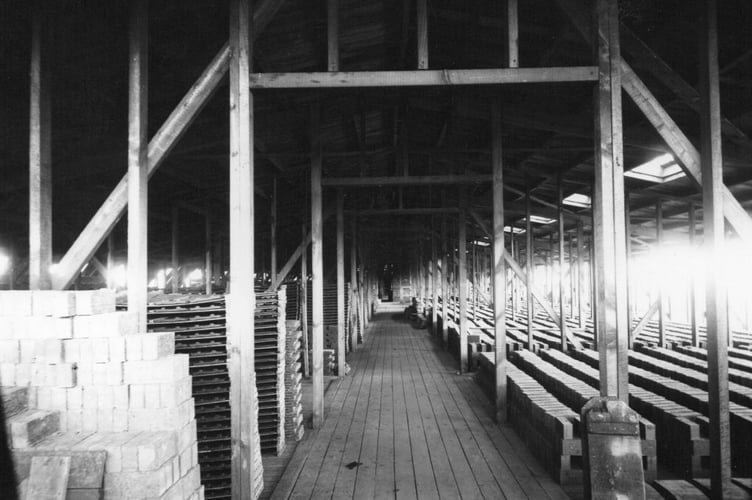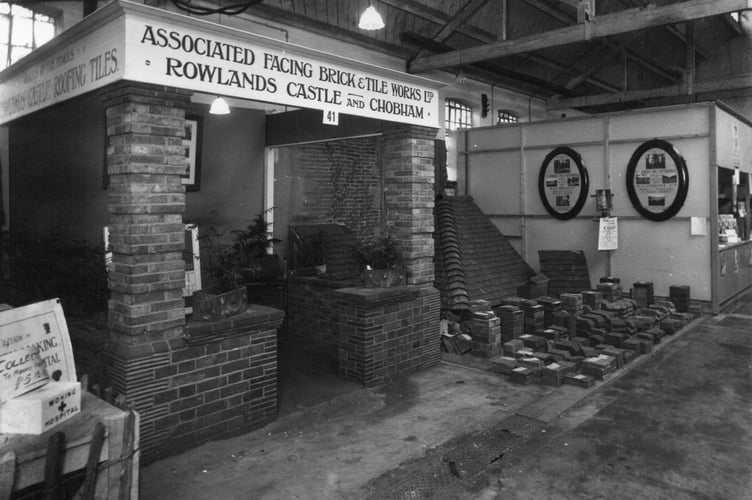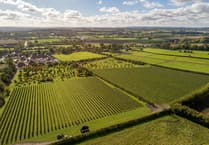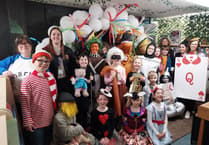BRICK-making was once a sizeable industry in the Woking area and one that has mostly been forgotten.
In past centuries, where clay was abundant, brickworks were set up when there was a demand locally for building materials. It was usually dug by hand in the summer and autumn and left in heaps over winter for frost, wind and rain to break it down into manageable pieces.
The winter months were also time for the gathering of fuel to fire the burning process. Once the weather had warmed up during springtime, the bricks were formed by hand in wooden moulds. The shaped ‘green’ bricks were then left to dry in the open air in rows known as hacks. They were then fired in the summer in large piles known as a clamps.
Up to 100,000 bricks could be fired in a single clamp. A number of flues would be left around the clamp, which were packed tight with brushwood and fagots. Once lit and burning well the flues would be blocked up and the clamp allowed to burn for several weeks.

Towards the end of the 19th century the process was improved with the introduction of kilns with chimneys that resulted in much less wastage. And in the larger brickworks mechanical digging machines were introduced to dig out the clay.
Eminent Woking historian Iain Wakeford has written of brick-making taking place in the 1780s and 90s in the St Johns area for use in the construction of the Basingstoke Canal. The Kiln Bridge is a reminder of that.
Also known as brickyards, bricks were made at a site off Robin Hood Road in the late 1850s for the building of the Woking Invalid Convict Prison, and there was another site off Anchor Hill. In the 1920s it was estimated there were around 21 brick-making businesses in Woking. But soon these were to close, owing to a depression in the building trade and also probably due to cheaper bricks being imported from elsewhere in Britain and even from abroad.
In 1920 Tarrant bought an existing brickworks at Rowlands Castle in Hampshire. In 1927 he floated the business on the stock market stating its annual output as being five million 500 thousand hand-made bricks and tiles and three million wire cut and pressed bricks.

The photo here shows a display of his company’s products, it being named the Associated Facing Brick & Tile Works Ltd, Rowlands Castle and Chobham. It is likely the photo was taken by Woking photographer Sidney Francis at an exhibition staged by the Woking Chamber of Trade in 1927, held at the Sorbo rubber factory in Woking.
The other two photos, one outside a brickworks and the other inside, are also thought to have been taken by Sidney Francis. But where? They might be Chobham, although my hunch is Rowlands Castle. Details on a website by the Rowlands Castle Heritage Centre about its brickworks (in use until 1968) show a picture of the works and a chimney that looks very similar.
If you have some memories or old pictures relating to the Woking area, call me, David Rose, on 01483 838960, or drop a line to the News & Mail.
David Rose is a local historian and writer who specialises in what he calls “the history within living memory” of people, places and events in the west Surrey area covering towns such as Woking and Guildford. He collects old photos and memorabilia relating to the area and the subject, and regularly gives illustrated local history talks to groups and societies. For enquiries and bookings please phone or email him at: [email protected]
For the full story get the 28 November edition of the News & Mail




